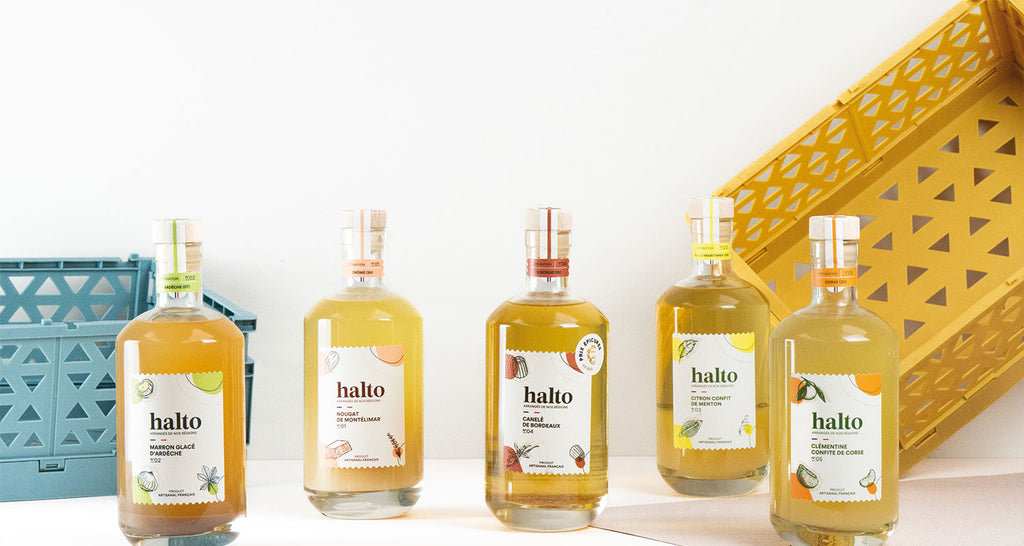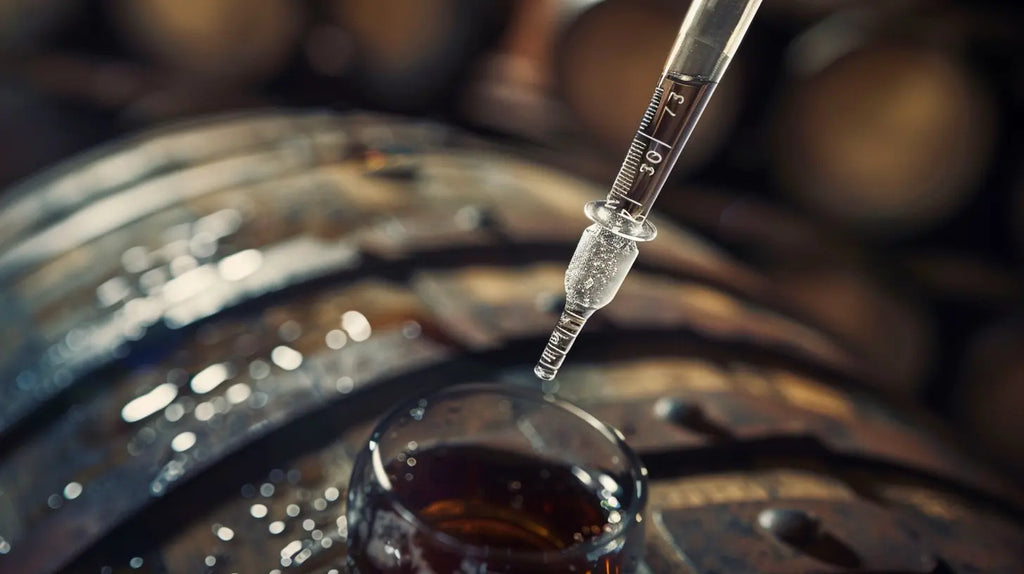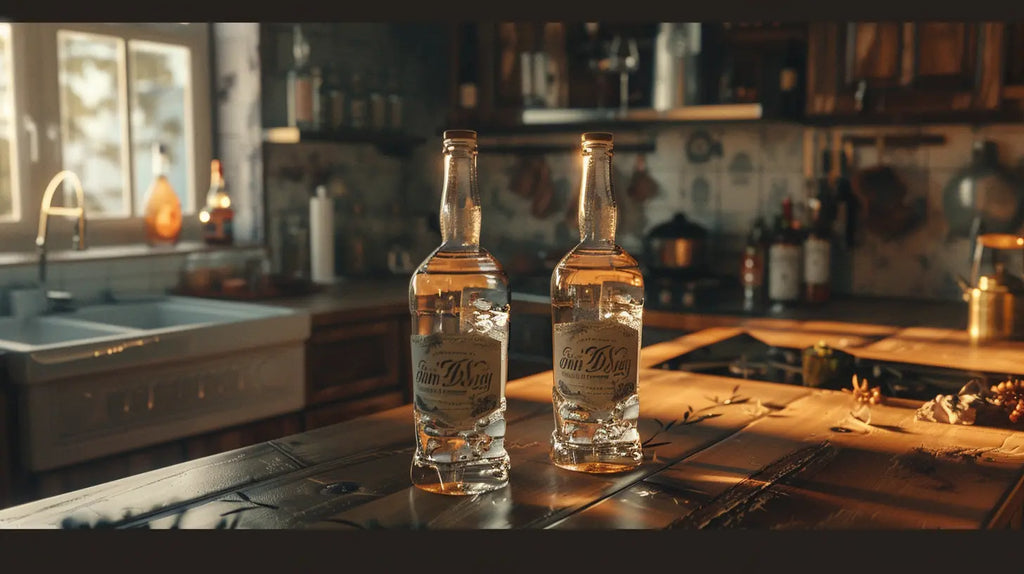What type of rum should you choose to make your rum mix?
Arranged rums are the result of a careful maceration of fruits, spices and herbs in rum , allowing to create an infinite number of variations according to personal tastes. The process of selecting rum should not be taken lightly, as each type brings flavors to the final arranged rum . But how to choose the right type of rum to make your arranged rum? Or what type of rum to choose to make your mojito . But here, we will see what are the different types of rums and which brands of rum to choose .
What are the different types of rum?

Rum is an alcohol derived from sugar cane , offering a rich palette of varieties influenced by their terroir of origin, whether it is the Caribbean or the islands of the Indian Ocean. Here are the different types of rum to use to make your own rum:
- White rum
- Amber rum
- Old rum
- Cachaça
Rums are divided into two main categories: agricole rums and traditional molasses rums. Within these categories, there are three main styles: French, English, and Spanish , each offering unique characteristics in terms of taste and texture.
White rum comes in two main forms: agricole and traditional. White agricole rum, often used in Ti Punches in the West Indies, is prized for its freshness and aromatic intensity . On the other hand, the lighter traditional white rum is the preferred base for rhums arrangés in Réunion, adding a subtle dimension to blends of spices and fruits.
Amber rum , on the other hand, ages in oak barrels for one to one and a half years, adopting an amber color and a character that harmonizes well in cocktails and culinary recipes. Less strong in alcohol , it is often appreciated in cocktails or used as an addition to various desserts for its subtle aroma.
Aged rum represents excellence in rum aging. After at least three years in barrels, these rums develop complex and deep profiles, ranging from dry to mellow, and from fruity to woody . They are often recommended for consumption neat, especially as a digestif, to fully appreciate their richness.
Aside from these categories, rum-like spirits like Brazilian Cachaça and Colombian Aguardiente are also worth mentioning. Cachaça, for example, while often consumed in the famous Caipirinha cocktail, can also be enjoyed neat to appreciate its natural sweetness.
How to choose the right rum to make your own rum punch
Choosing your rum according to its alcohol content

When preparing rum blends, choosing the right alcohol content is crucial not only for flavor extraction but also for maintaining the overall balance of the drink, especially when using juicy fruits. Fruits like melon, which contain a high water content, can significantly dilute the rum, reducing the final alcohol content of your rum blend.
To counteract this effect, it is advisable to opt for a rum with a higher initial alcohol content . For example, while 40% rums may be sufficient for simple preparations, using juicy fruits might require a 50% or even 55% rum to maintain the alcoholic integrity and depth of flavor in your rum arrangé.
Agricole rums, with their strong taste and vegetal notes, can overpower subtle ingredients , while rums like Charrette, with a more neutral profile, harmonize better with a wide range of ingredients without overwhelming their flavors.
Choose your rum according to the ingredients
There's no universal rule, but we'll look at some examples of combinations that work well. Here's a table summarizing the different types of rum to use depending on the ingredients in your rum blend:
| Ingredients | Recommended type of rum | Reason |
|---|---|---|
| Sweet fruits (peaches, pears) | Light white rum or agricultural rum | These rums, less dominant, allow the subtle sweetness of the fruits to be better expressed. |
| Tropical fruits (pineapple, mango) | Strong rum or spiced rum | The more robust character of these rums complements the intense, acidic flavors of tropical fruits. |
| Spices (cinnamon, nutmeg, cloves) | Amber or old rum | The natural vanilla and caramel notes of these rums pair well with warm spices. |
| Fresh herbs (basil, mint) | White rum or light agricultural rum | Their clear, neutral profile highlights the delicate freshness of the herbs without masking them. |
| Hot ingredients (chili peppers, tonka beans) | Spiced rum or rum with a bold profile | These rums can either contrast or amplify the unique characteristics of these special ingredients. |
Choosing your rum according to the type of rum
Which white rum should you choose to make your own rum mix?
- Bacardi Carta Blanca : Often bitter with almost imperceptible notes of vanilla. It is light and can sometimes be too subtle when used in unsweetened rums.
- Trois Rivières Blanc 40 : Sweet and caramelized, it is simple but pleasant, well-suited for those looking to prepare an arranged rum with a sweet and uncomplicated taste profile.
Which amber rum should I use to macerate an arranged rum?
- Saint James Ambré : Distinguished by its pronounced notes of banana, with a less dominant vanilla. It offers a rich taste that can complement sweet fruits in an arranged rum.
Which aged rum should you choose to make your own spiced rum?
- Havana Club 7 Years : Fairly neutral for an aged rum, with subtle notes of banana and understated vanilla, which may be a little disappointing for those looking for depth of flavor.
- Neisson 55 : An aged white rum, high in alcohol but light in flavor, with a notable presence of banana and a subtle hint of vanilla.
Which high-end rum should you choose to make your own rum blend?
- Caliche : A rum from Peru that offers a rich profile with a nice roundness, balancing banana and vanilla for a slightly complex blend.
- Chamarel : A molasses rum that transforms a simple recipe into a special experience with its complex and inviting bouquet, and caramelized notes enriched by the presence of banana and vanilla.
Cheap rum to make your own rum mix?
- Charrette : Often used in arranged rums in Reunion, this rum brings simple notes of banana and vanilla, ideal for those looking for a direct result without complexity.
- Montgeoffroy (Lidl) : Offers an honest experience without being remarkable, with a neutrality that can be an advantage or a disadvantage depending on the other ingredients used.
Which spiced rum should you use to make your own spiced rum?
- Captain Morgan Spiced Gold : Known for its rich spice profile, it offers notes of vanilla and cinnamon that can beautifully enrich arranged rums, adding depth of flavor without added complexity.
- Sailor Jerry : This rum features a bold blend of spices, with notes of vanilla, cinnamon, and nutmeg, perfect for those who want a robust spicy base for their creations.
Each type of rum can play a different role in your rum blend. For example, for recipes requiring a neutral base that allows the flavors of fruit and spices to shine, a white rum or a light agricultural rum may be preferable . On the other hand, for preparations where you want to add aromatic complexity with notes of wood or caramel, an amber or aged rum would be more appropriate .
Which rum should you choose to start making your own rum mix?
For those new to making rum blends, it's best to start with rums that are not only affordable but also of good quality. Here are some options:
- White agricultural rum like Trois Rivières or Damoiseau : These rums are perfect for beginners because they offer a fresh flavor profile and are versatile enough for various recipes.
- Traditional white rum like Bacardi Superior : Although it's simple, it works well in rum blends and is excellent for learning the basics of maceration.
- Amber rum like Saint James Ambré : Ideal for those who prefer a sweeter, slightly spicy taste, perfect for fruity rum recipes.
These rums are not only easy to find but also relatively affordable, making them ideal for experimenting without investing too much.
Conclusion on choosing the type of rum to make your arranged rum
For beginners, it's essential to start with a solid foundation, choosing rums that will allow room for the ingredients to be macerated, such as Charette rum. For the more adventurous, experimenting with aged or spiced rums can add layers of complexity to your arranged rums, but be careful not to end up with too much flavor. In conclusion, don't be afraid to test , experiment, and make mistakes. Every attempt is an opportunity to learn and refine your skills. Whether you're a curious novice or an experienced enthusiast, the world of arranged rums is vast and welcoming. With each blend, you're not just creating a drink, but a story to share, a moment to savor, and perhaps even a tradition to perpetuate.
You can also discover our other blogs on rum:













